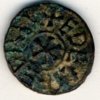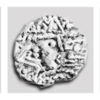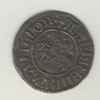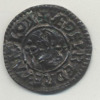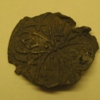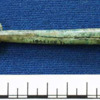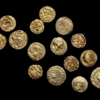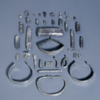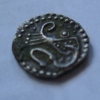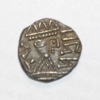Browse Items (36 total)
- Tags: Numismatics
Sort by:
Alloy Coin (Styca)
AN175447001. Alloy coin (styca) - Leofthegh and Æthelræd II. All these images are © Trustees of the British Museum. These free low-resolution images are covered also under the British Museum's Terms and Conditions…
Tags: Archaeology, British Museum, Coins, Numismatics
Anglo Saxon Coins and "Chinese Whispers"
It may be hard to believe, but the design of the central and right-hand coins is based on the Antoninianus (left). It seems that Anglo Saxon coiners had the difficult job of making copies of Roman coins with no access to the originals. They…
Tags: Art history, Coins, Numismatics, Runes
Anglo Saxon coins from the Bath Mint
The Bath Mint produced more issues of coins than any other mint in England during the reign of Aethelred II (978-1016AD). The popularity of the mint did not diminish during the Saxon period, with every Saxon king until Harold II making use of it…
Tags: Archaeology, Coins, Numismatics
Anglo Saxon coins from the Bath Mint
The Bath Mint produced more issues of coins than any other mint in England during the reign of Aethelred II (978-1016AD). The popularity of the mint did not diminish during the Saxon period, with every Saxon king until Harold II making use of it…
Tags: Alfred, Archaeology, Cnut, Coins, Numismatics
Anglo Saxon Money:- Penny
This is a silver penny of Queen Cynethryth, wife of Offa. Such coins are very rare finds and even more rarely do they come in good condition. This coin would have been made by hammering a flan of silver between 2 metal dies.
Tags: Archaeology, Coins, Numismatics, Offa, Women
Anglo-Saxon Discovery Artefacts Part II
Objects from the Ashmolean 'Anglo-Saxon Discovery' exhibition, 2005:
Cosmetic brush - Cassington, Toilet set - Cassington, Pottery spindlewhorl, Tweezers - Brighthampton, Knife - G5, Firesteel - Brighthampton, Pennanular brooch, Small long brooch, A…
Cosmetic brush - Cassington, Toilet set - Cassington, Pottery spindlewhorl, Tweezers - Brighthampton, Knife - G5, Firesteel - Brighthampton, Pennanular brooch, Small long brooch, A…
Tags: Alfred, Anglo-Saxon daily life, Archaeology, Ashmolean Museum, Bone, Brooch, Coins, Glass, Jewellery, Numismatics, Sword, Tableware, Viking, Weapons
Crondall Hoard - Selection of coins
Ashmolean Museum inventory no. HCR4915. Gold. c.640. Gold thrymsas. Originally the hoard consisted of 101 coins. Modelled on Merovingian coinage; possibly the earliest English shillings and certainly the most important evidence for early Anglo-Saxon…
Tags: Archaeology, Ashmolean Museum, Coins, Hoard, Numismatics
Cuerdale Hoard
Ashmolean Museum inventory no. AN1909.519-551. Silver. Largest Viking-Age silver hoard discovered to date in North-West Europe, consisting of over 8,500 individual silver items, buried in a lead lined chest. They include silver ingots, rings,…
Tags: Archaeology, Ashmolean Museum, Hoard, Numismatics, Silverwork, Viking
Early Anglo-Saxon Money:- Sceat
This is a good example of a Sceat (Sceatta?). These prototype gold and silver coins preceded the more recognisable later flat silver pennies.
Found with a metal detector in a field near Ewelme in Oxfordshire, these are not common finds.
Found with a metal detector in a field near Ewelme in Oxfordshire, these are not common finds.
Tags: Animals, Archaeology, Coins, Numismatics
East-Anglian Sceat (Runic)
Anglo-Saxon sceat, c. 710-760AD. East-Anglian R1.
Runes read EPA, probably the name of the moneyer.
Runes read EPA, probably the name of the moneyer.
Tags: Archaeology, Coins, Numismatics, Runes

